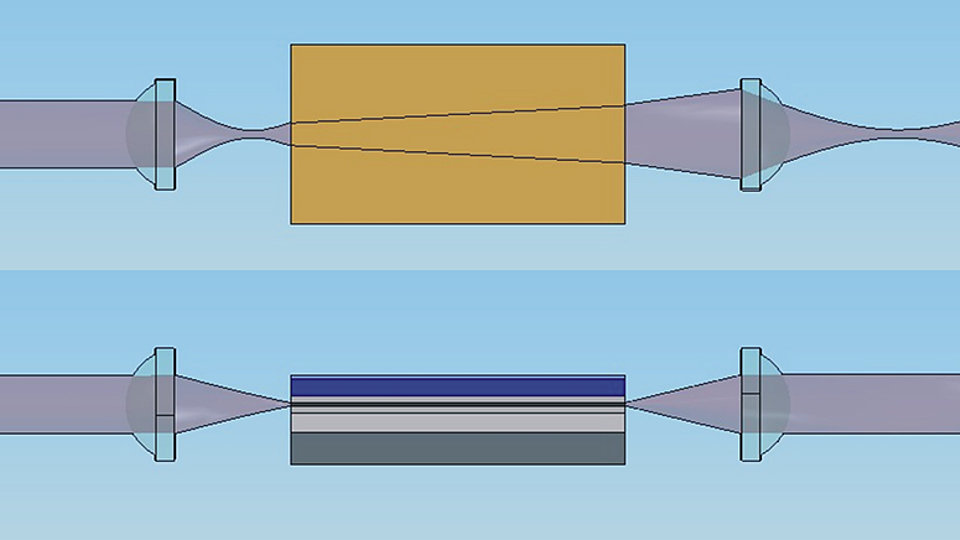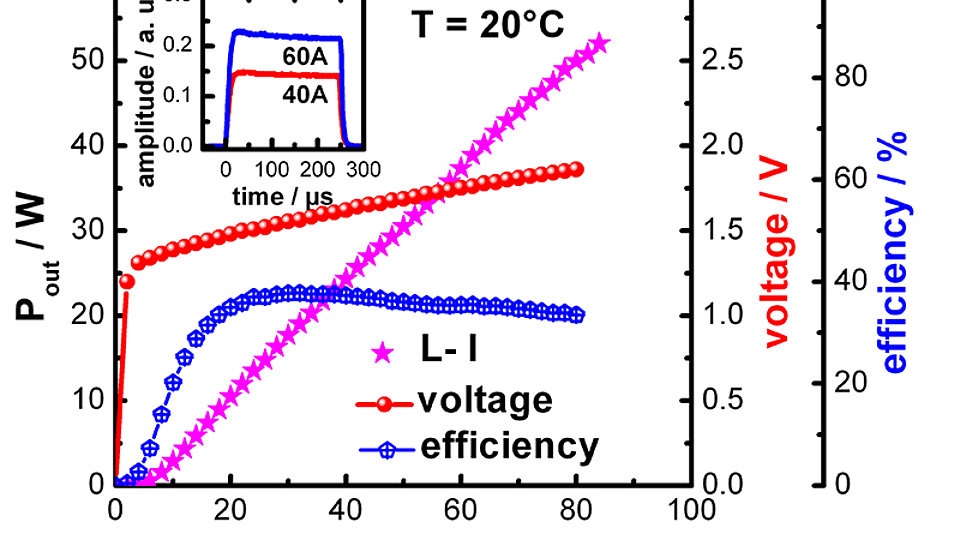Powerful brilliant light sources: Truncated-tapered semiconductor optical amplifiers improve MOPA system performance
Fig. 1: Schematic of the optical system used for in- and out-coupling of the semiconductor power amplifier in top view (upper) and side view (under).
One of the current challenges in the development of semiconductor-based light sources is to combine optical powers in the Watt class with diffraction-limited beam quality and spectrally stable and narrow-band emission. Every improvement enables new applications in material processing, optical free-space communication, as well as in display and LIDAR technology. Significant progress has recently been achieved in this field using "Master-Oscillator-Power-Amplifier (MOPA)" systems. The output stage is based on a semiconductor optical amplifier with a large-area gain region. The MO produces spectrally narrow emission, with diffraction limited beam quality. The optical emission from the MO of around 0.5 W is coupled into the amplifier. The amplifier (power amplifier – PA) has an electrically pumped area with a so-called "truncated" taper-profile. This design enables a high output power and at the same time good beam quality (see Fig. 1). Low optical loss and a tailored modal gain are both critical factors in the design of semiconductor structures for use in such amplifiers, with the gain matched to the output of the MO. The gain must produce sufficient amplification; however if gain is too large the beam quality is degraded.
Based on variations to the vertical wave guide and the number of quantum wells, optimized semiconductor layer structures have been successfully developed that allow single amplifiers to achieve more than 17 W diffraction limited optical output under quasi-continuous-wave (QCW) conditions. The spectral properties are defined by the MO, with a spectral width of under 40 pm. A total power of more than 50 W was emitted within a narrow spectral band, as seen in Fig. 2. Further developments are now planned, that will produce compact MOPA-based systems that are optimized for CW-operation. This means in particular that the power conversion efficiency must be increased, and the optical components miniaturized. This optimization process will lead to MOPA systems being very attractive for use in commercial applications.
Publication
X. Wang, G. Erbert, H. Wenzel, B. Eppich, P. Crump, A. Ginolas, J. Fricke, F. Bugge, M. Spreemann, G. Tränkle, "High-power, spectrally stabilized, near-diffraction-limited 970 nm laser light source based on truncated-tapered semiconductor optical amplifiers with low confinement factors", Semicond. Sci. Technol., vol. 27, no. 015010 (2012).
FBH research: 24.08.2012

